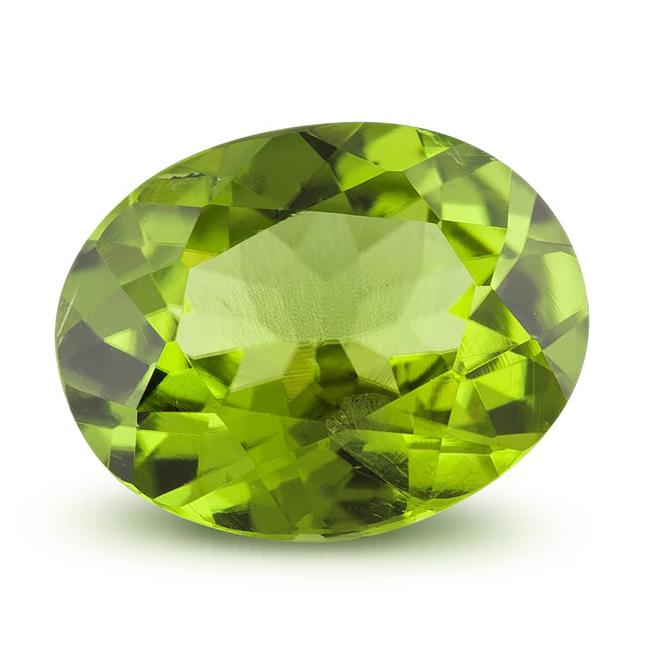Where is peridot found? Peridot gems can be found in a variety of different locations around the world including Pakistan, Myanmar, Vietnam, Australia, Brazil, China, Egypt, and the United States (mainly Arizona and Hawaii).
Where does the gem’s green color come from? A peridot’s color comes from iron. The intensity of the color depends on the amount of iron present in the gemstone.
Do peridot gemstones come in any other color besides green? No, peridot is one of the few gemstones that come in only one color.
Can peridot jewelry be worn every day? With a rating of 7 on the MOHS scale of mineral hardness, you should take caution while wearing your peridot jewelry. If you want an everyday jewelry piece, make sure the peridot is placed in a secure setting. You’ll also want to avoid rubbing your peridot jewelry against anything that might scratch or damage it.
How is peridot formed? Peridot is one of the two gemstones formed in the Earth’s mantle (the other being diamond). Formed in magma, peridot is brought up to the Earth’s surface by tectonic or volcanic activity.
What determines the value of a peridot? Like other gemstones, the quality of a peridot is determined by its color, clarity, cut and carat weight. The finest peridots feature a green color that is absent of any yellow or brown tint. In regard to the other quality factors, the most valuable peridot gemstones have very few visible inclusions, are large in size, and are well cut.
Does peridot symbolize anything? Historically, peridot was believed to bring happiness and foster friendship. Prized by the ancient Egyptians as the gemstone of the sun, peridot is thought to protect its owner from terrors of the night. It is the designated birthstone for the month of August and the recognized gemstone for the 16th wedding anniversary.
How should I care for my peridot jewelry? Clean your peridot jewelry with warm, soapy water and a gentle toothbrush.
View Kloiber Jewelers’ online peridot jewelry collection here.


